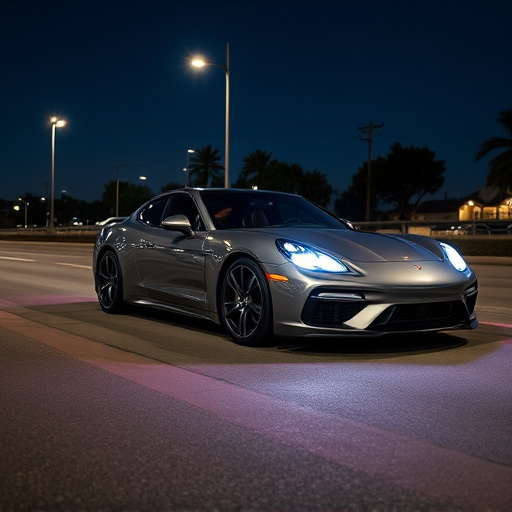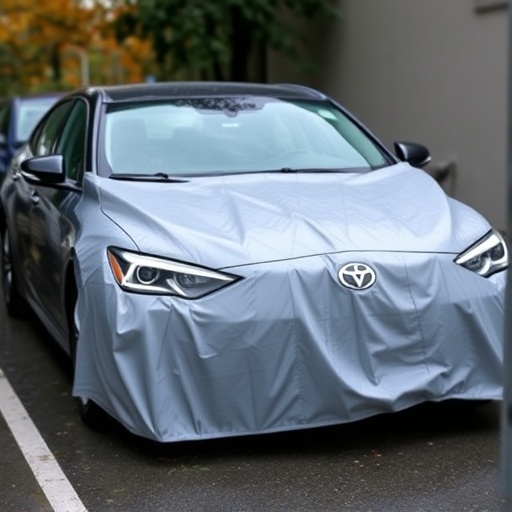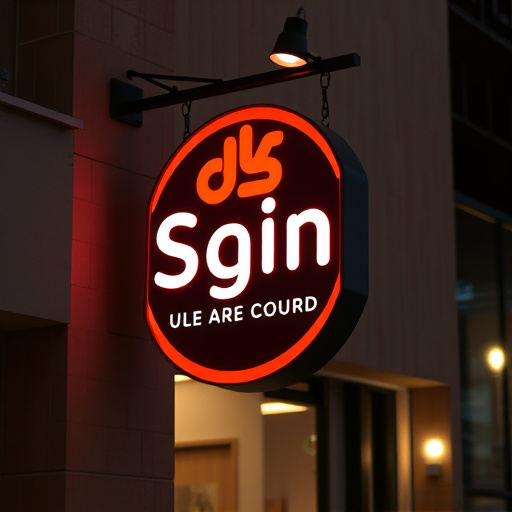Elevate Your Ride: Flawless Partial Vehicle Wrap Techniques
Partial vehicle wraps offer a cost-effective way to transform your car's look without fully cov…….
Welcome to an in-depth exploration of the dynamic world of partial vehicle wraps—a revolutionary approach to automotive advertising, branding, and design. In today’s competitive market, businesses are constantly seeking innovative ways to distinguish themselves, and the partial vehicle wrap has emerged as a powerful tool for achieving this. This article aims to provide a comprehensive guide to understanding, implementing, and harnessing the potential of partial vehicle wraps. By delving into its various facets, we will uncover how this technology is reshaping the automotive industry, capturing attention, and driving engagement on roads worldwide.
Partial vehicle wrap, also known as partial car wrapping or targeted vehicle graphics, refers to the strategic application of adhesive-backed graphics or wraps on specific portions of a vehicle’s exterior surface. Unlike traditional full vehicle wraps that cover the entire car, this method allows for precise customization, targeting particular areas such as doors, hoods, trunks, or even wheels. The core components include:
The concept of vehicle wrapping has its roots in the early 1990s when businesses started experimenting with adhesive graphics as a cost-effective alternative to traditional paint jobs. Initially, partial wraps were used primarily for promotional events and advertising campaigns, offering a mobile billboard effect. Over time, technological advancements in printing and material science revolutionized the industry. High-resolution printers and advanced vinyl materials enabled more intricate designs and improved durability. This evolution led to wider adoption, with businesses recognizing the potential of partial vehicle wraps as a powerful branding tool.
Partial vehicle wraps offer several strategic advantages:
The partial vehicle wrap phenomenon has transcended geographical boundaries, gaining traction across diverse markets. From bustling city streets in North America to winding rural roads in Asia, businesses and marketing agencies have embraced this strategy. This global adoption can be attributed to several factors:
Different regions have unique approaches to partial vehicle wraps, influenced by local cultures, regulations, and economic factors:
| Region | Trend/Variation | Example |
|---|---|---|
| North America | Vehicle Graphics as a Service | Companies specializing in mobile advertising offer comprehensive wrap services, including design, installation, and maintenance, catering to businesses of all sizes. |
| Europe | Regulatory Compliance with a Twist | Strict EU regulations on vehicle modifications inspire creative solutions, with wraps blending functional (e.g., safety markings) and aesthetic elements. |
| Asia | Cultural Fusion and Sponsorships | In countries like Japan, partial wraps often incorporate traditional motifs or sponsor sports teams, merging local culture with branding. |
| Australia | Environmental Awareness | Wraps promoting environmental causes or eco-friendly products gain traction, aligning with regional sustainability initiatives. |
The global vehicle wrap market, encompassing both partial and full wraps, is experiencing steady growth. According to a 2023 report by Grand View Research, the market size was valued at USD 5.9 billion in 2022 and is expected to expand at a CAGR of 10.8% from 2023 to 2030. This expansion is driven by:
The economic landscape surrounding partial vehicle wraps is dynamic and multifaceted. Businesses invest in these strategies for various reasons, each driving market activity:
Investing in partial vehicle wraps offers several financial considerations:
The technological front is where partial vehicle wraps truly shine, with constant innovations enhancing their capabilities:
The digital revolution has not passed partial vehicle wraps by, leading to:
As technology evolves, the future of partial vehicle wraps holds immense promise:
The legal framework surrounding vehicle modifications, including partial wraps, varies widely across countries, reflecting diverse cultural and social values:
For businesses venturing into partial vehicle wraps, compliance is crucial. Here are some key considerations:
Despite its numerous advantages, the partial vehicle wrap industry faces several challenges and criticisms. Addressing these issues is essential for sustainable growth:
The industry has responded to these challenges with proactive measures:
Client: A leading fashion retailer sought to increase brand visibility and engage young urban customers.
Strategy: They partnered with local wrap providers to install vibrant, seasonal designs on a fleet of delivery vans and buses. The wraps incorporated interactive elements, such as QR codes linking to exclusive online offers.
Results: Within three months, the campaign generated significant social media buzz, with over 20,000 unique interactions on branded hashtags. Sales increased by 15% in targeted urban areas, surpassing initial expectations.
Client: A ride-sharing company wanted to promote its commitment to sustainability while reducing costs.
Solution: They implemented a partial wrap program featuring designs highlighting the company’s eco-initiatives. Wraps were applied to older model vehicles, transforming them into mobile billboards that raised awareness for environmental causes.
Impact: The campaign fostered positive brand association and attracted environmentally conscious riders and drivers. The company reported a 20% increase in user downloads within six months, with many new users citing the eco-focused wraps as a primary reason for choosing the platform.
Client: An international fast-food chain wanted to celebrate local cultures while launching a new regional menu.
Approach: They collaborated with local artists and designers in each target region, creating partial wraps that incorporated traditional motifs and cultural symbols alongside the brand logo.
Achievements: The campaign resonated deeply with customers, fostering a sense of community and belonging. Sales increased by 30% across all regions, with local partners reporting higher customer retention and positive feedback on social media platforms.
The partial vehicle wrap industry is poised for continued growth and innovation. Here are some key trends shaping its future:
To capitalize on these trends and ensure long-term success, businesses should:
Partial vehicle wraps have evolved from niche marketing strategies to powerful tools in the automotive and branding industries. With technological advancements, innovative applications, and a growing global market, the future looks bright for this dynamic form of mobile advertising. As businesses embrace these strategies, they can expect increased brand visibility, enhanced customer engagement, and unique competitive advantages.
By navigating the legal landscape, addressing challenges head-on, and staying at the forefront of technological trends, the partial vehicle wrap industry will continue to thrive, reshaping how we perceive and interact with mobile branding solutions. As the world becomes more connected and visually driven, these wraps will play a pivotal role in capturing attention, conveying messages, and fostering meaningful connections between brands and consumers.

A partial vehicle wrap offers an affordable way to personalize and protect cars or trucks, applying…….

A partial vehicle wrap is a cost-effective way to transform cars, trucks, or vans while preserving o…….

Partial vehicle wraps are a cost-effective branding solution for businesses, strategically applying…….

A partial vehicle wrap is a strategic branding solution that allows businesses to target specific ar…….